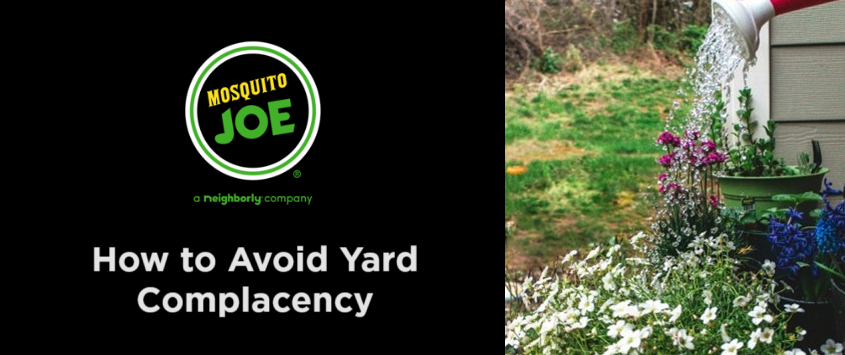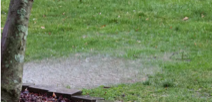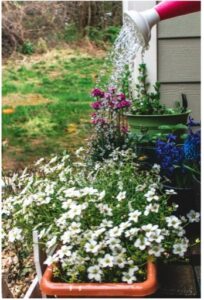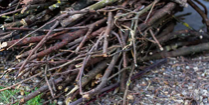

Yes, we just invented the term, but we’ve seen it every year since we opened back in 2015. Let’s discuss:
Potential new customers call us for a quote, and many tell us that they have “no water in the yard at all”. Frankly, we have yet to find a yard without water somewhere. But we spend time speaking to them about the potential pitfalls of water, and of course, when we treat a yard, the technicians always report in with problem areas that they note. This information goes into the customers’ account notes, but we often also reach out to the customer and let them know. Some issues, like a cracked septic tank lid for example, require the help of the customer to remedy.

Still, we are used to thinking about the upkeep of our yard in the fall; when raking the leaves and keeping the gutters clean goes a long way to minimizing water collection. In the spring, we busy ourselves removing the weeds, cleaning up the shrubs, and planting new flowers. But rarely do we do any of this in mid-summer.
The thing about water is, it doesn’t just collect from a rainfall or summer storm. Typically, most customers are either watering their yard with a sprinkler system or setting some hoses out to run in the early morning or evening. But there is something about our brain that, in the light of a drought or extreme heat, makes us forget that this alone may be causing standing water. Remembering that it only takes 1 teaspoon to breed 300 mosquitoes. We see a lot of customers who try to combat the heat by overwatering, but our technicians see the results in a couple of ways: first they sink into the mulch because the ground is so saturated, and they also notice a lot of water collected at the edges of flower beds. Combine this water with the temperatures and the result can be a huge uptick in your mosquito numbers.

Another thing to consider is the consequences of a drought. Last year, we saw the trees dropping their leaves in mid-summer as they struggled with the lack of rain. This mimics a fall scenario, where our gutters fill and clog. At the first rain we will see standing water in all these gutters, but for some reason our brain thinks “it’s summer, no need to check the gutters”.

We will gather firewood and twigs when we clean out shrubs in the spring, and then store them behind our fence or to the side of the house for the winter. In other words, these items are sitting in shady areas begging mosquitoes to come hang out. We won’t rake the fallen “drought” leaves in the summer, causing the same kind of issues that we see in the fall. We will put the pool toys, kids’ playhouses, and other toys outside and leave them there. Then we will water the yard and let these collect items water for the mosquitoes to lay in.
Yard complacency occurs when you make assumptions about your yard simply because of the season or the weather. Hot weather does not mean it’s dry in your yard, and summer doesn’t automatically mean your gutters are clean. The best approach, when battling the never-ending war against mosquitoes, is to approach your yard with the same eyes no matter the time of year. The mosquitoes won’t thank you, but you will benefit greatly in the long run.
